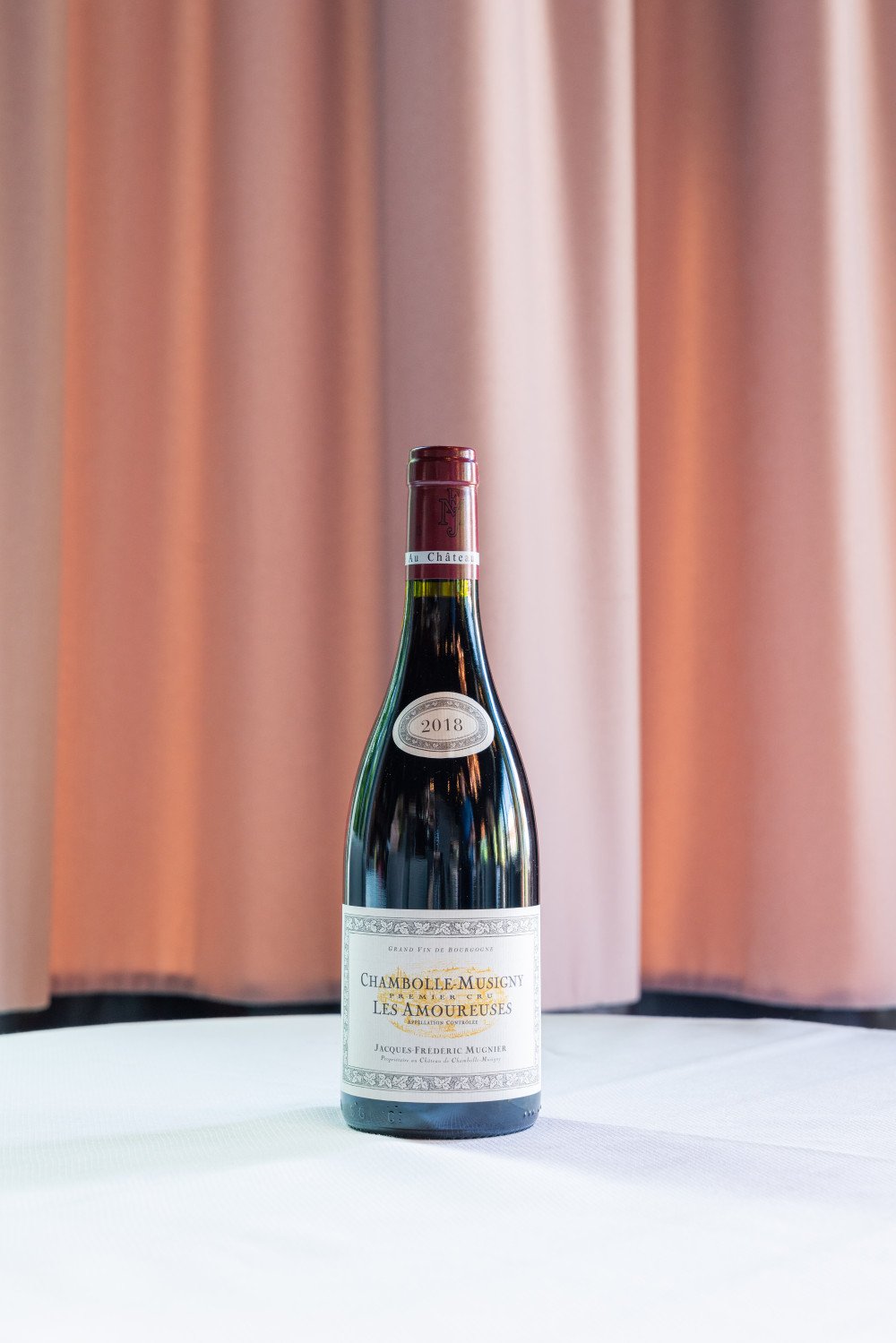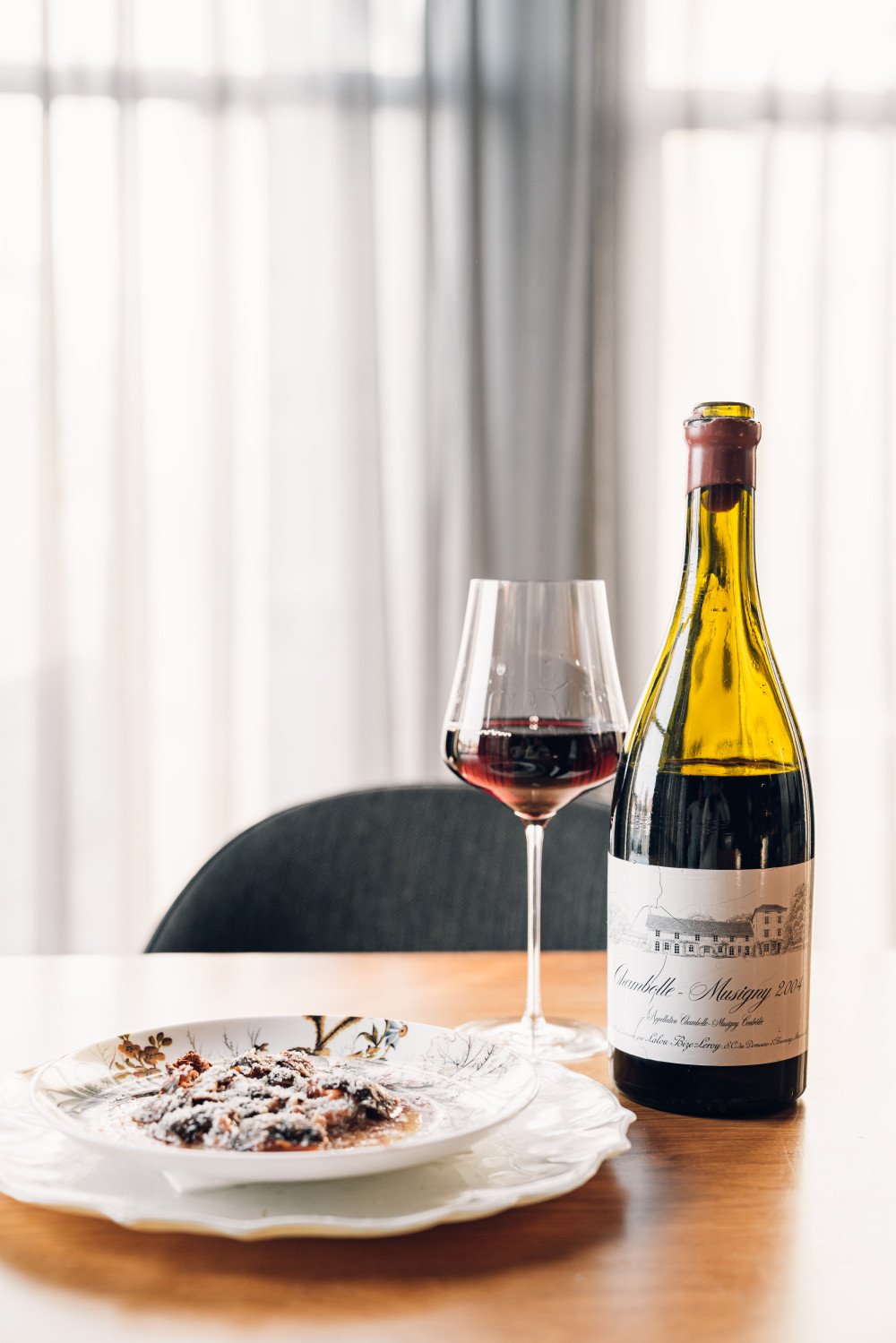Chambolle-Musigny
It is the subtle notes and silky texture that make Pinot Noir wines from Chambolle-Musigny some of the most elegant reds in French Burgundy. With 24 Premiers Crus, the wine styles are truly diverse.
The best wines from Chambolle-Musigny
It is the subtle notes and silky texture that make Pinot Noir wines from Chambolle-Musigny some of the most elegant reds in French Burgundy. With 24 Premiers, like the Amoureuses wiues wines from Comte de Vogue and J.F. Mugnier, the wine styles are truly diverse.
Chambolle-Musigny is located about half an hour's drive south of Dijon in the heart of the Côte de Nuits. The appellation, which covers just 150 hectares, is nestled between the famous neighbouring communes of Morey-Saint-Denis to the south and Vougeot to the north. Incidentally, until the end of the 19th century, the appellation was simply named after the village of Chambolle, around which the best vineyards are located.
Where exactly is the Chambolle-Musigny appellation?
Let's take a little trip through Burgundy together. Chambolle-Musigny is located about half an hour's drive south of Dijon in the heart of the Côte de Nuits. The appellation, which covers just 150 hectares, is nestled between the famous neighbouring communes of Morey-Saint-Denis to the south and Vougeot to the north. Incidentally, until the end of the 19th century, the appellation was simply named after the village of Chambolle, around which the best vineyards are located. The addition of ‘Musigny’ was only introduced at the end of the 19th century to honour the Grand Cru Musigny – and at the same time to give the wines more significance. This was a clever move, which also ensured that Chambolle-Musigny was officially granted AOP status – i.e. appellation – in 1936.
There are few appellations in Burgundy that have such a variety of sites as Chambolle-Musigny. This is proven by the 24 Premiers Crus alone, which are spread across the entire appellation and produce highly diverse styles. Among the most famous Premier Crus are Les Charmes, Les Fuées, Les Cras, Les Gruenchers, Les Sentiers and, of course, Les Amoureuses. Les Amoureuses is now even considered a candidate for Grand Cru classification. There are currently two Grand Crus in the Chambolle-Musigny region: Musigny and Bonnes-Mares. Musigny is not only one of the most prestigious sites in the Côte de Nuits, but also very special. It is the only Grand Cru in the Côte de Nuits where Pinot Noir and Chardonnay are equally permitted. However, only tiny amounts of Chardonnay are grown here. While Musigny covers 10.67 hectares, Bonnes-Mares covers 15 hectares.

Other Appellations
Grapes in wines from Chambolle-Musigny
As we have already mentioned, Pinot Noir and Chardonnay are the only grape varieties found in Chambolle-Musigny. And if we are honest, you have to look very closely and often to find Chardonnay. This white grape is only grown on one per cent of the area. No wonder, then, that a white Musigny is an absolute exception and a sought-after rarity for collectors. Pinot Noir clearly dominates in Chambolle-Musigny. There is a good reason for this, which can be found primarily in the soil. Which brings us straight to the next point.
Climate and soils in Chambolle-Musigny
The foundation for the soil in Chambolle-Musigny was laid 200 million years ago in the Jurassic period. At that time, the primeval seas receded and, due to continental plate shifts, different layers of soil folded over each other. In Burgundy, these were mainly calcareous and loamy soils. In Chambolle-Musigny, however, there is hardly any loam, which is actually a small peculiarity. Here, hard limestone dominates, which is criss-crossed by many cracks. It is precisely these cracks that allow the vines to root particularly deep into the earth here.
Small-grained limestone dominates the upper part of the vineyards, while the famous Comblanchien limestone and clayey layers in the lower part ensure a balanced water supply. Gravel and scree on the lower slopes ensure excellent drainage. All of this is simply ideal for Pinot Noir. Added to this is the continental climate with its warm summers and cool winters. It is neither too hot nor too cold here, and the east-facing vineyards enjoy ideal sunshine. In addition, the slopes protect against the dreaded late frosts and ensure good ventilation on hot days. It doesn't get any better than this for Pinot Noir. That's precisely why this grape variety is the star of Chambolle-Musigny.
Wine producers
What does a wine from Chambolle-Musigny taste like?
With 24 Premiers and two Grands Crus, you can imagine that the wine styles are truly diverse. In fact, the Premiers Crus alone produce highly different characters. From meaty and powerful to quiet and delicate, everything is there. And while the Grand Cru Musigny is known for very elegant and subtle Pinot Noir wines, the wines from the Grand Cru Bonnes-Mares are more powerful and structured, but still display the finesse that is so typical of a Chambolle-Musigny.
Of course, there are still a few common denominators among the red wines. For example, the delicate fruit aromas of red fruits such as cherry, raspberry and strawberry, which are usually accompanied by floral notes of violet and delicate spices. Not to forget the mineral nuances and silky texture. The harmonious acidity and fine tannins are also very typical. A mature Chambolle-Musigny then adds aromas of game, truffles and undergrowth. All this is extremely elegant and subtle, which is why these wines are often described as the most feminine in all of Burgundy.
What food goes well with wines from Chambolle-Musigny?
Ah, here connoisseurs can really indulge themselves! Delicate veal dishes with mild sauces go just as well with a Chambolle-Musigny as coq au vin, pheasant, quail, guinea fowl or roast poularde.
If you would like to enjoy a mature Chambolle-Musigny, its tertiary aromas make it a perfect match for game dishes such as venison or venison ragout, as well as all kinds of dishes with mushrooms and truffles. There are no limits to your creativity.



